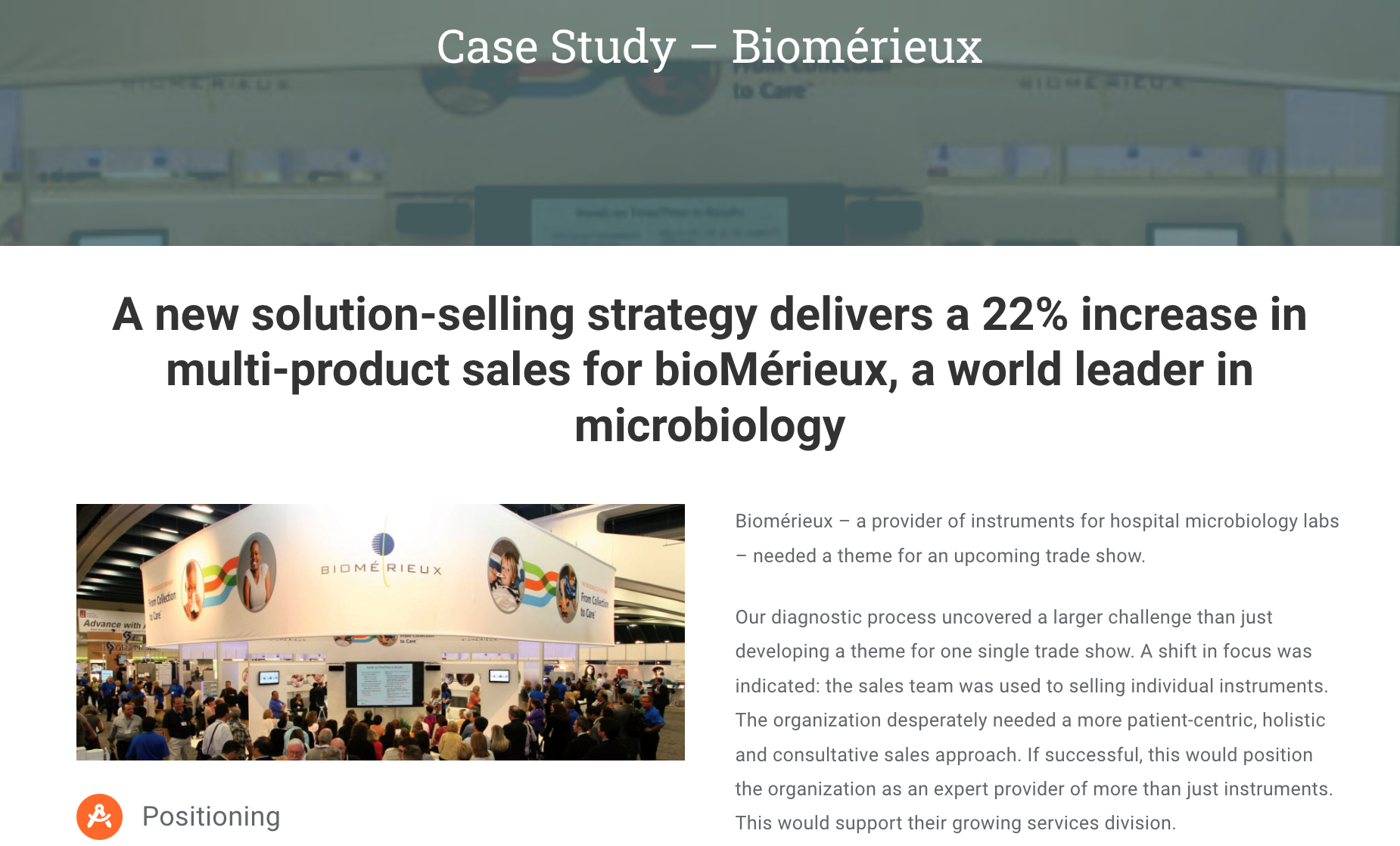3 Crucial Ingredients Every Life Science Case Study Needs
By Jordan Eller

What separates an effective life science case study from an ineffective one?
Case studies are a particularly potent part of your marketing toolkit. They’re a great way to convert members of your audience while also bolstering your brand’s reputation and expertise.
Potential buyers need three things before they make a decision: education, inspiration, and reassurance. These are the essential ingredients of any successful case study. Let’s explore what this means.
Ingredient 1: Education
One of the most common issues we see in a life science case study is that they’re too focused on sales and not educational tools.
Case studies are not the place for you to flex your sales muscles; save the sales for your outbound campaigns. Instead, focus on educating your audience on the problem, the solution, and the results. Check out this example of a case study based on a project we executed on for our friends at Biomérieux:
Our goal was to plainly state what the client was struggling with, then explain how we approached the problem, and finally outline the results that could be attributed to our work. This is the kind of education that your audience is looking for.
Ingredient 2: Inspiration
Inspiration is arguably the most important part of the buying process. A potential client needs to be compelled to engage with your brand, and the best way to encourage engagement is by inspiring them in some way.
Case studies are a great catalyst for inspiration. The goal of a life science case study should be to create an impression while also adding to your brand’s reputation.
Use your case study to articulate your unique value and how you’re different from your competitors. If you’re able to inspire your audience with dynamic details about your organization, you’ll be one step closer to converting curious customers into loyal and satisfied customers.
Ingredient 3: Reassurance
A great benefit to an effective life science case study is that it will build trust in your brand. Trust can be the primary element that makes a potential customer go from “Hmm, I’m not sure about this” to “Oh wow, these people really know their stuff“. It’s a very important distinction that can make or break your brand perception.
A proven way to instill trust is by being transparent with your audience. Be up-front with your process and how you solve problems. Reveal the details of a specific prior engagement (with permission from your client, of course).
For more information on how trust can elevate your brand above your competitors, check out our companion blog, Trust Signals: What They Are and How to Use Them
These are a few ways you can use trust to reassure your audience. Remember, honesty is the best policy!
These are the most crucial elements of a compelling life science case study. If you’re looking for a proven agency partner to help support your case study needs, don’t hesitate to reach out to Forma today!







